With so many amazing cameras on the market, it can be daunting to decide which one is right for you. If you are stuck between the Canon EOS R6 and the 5D Mark IV, here is a comparison of the two cameras to help you make your decision. Both of these cameras are great options, but they do have some key differences. In this blog post, we will compare and contrast these two cameras to help you decide which one is right for you!
What Is Canon EOS R6?
The 2020 release of the Canon EOS R6 marks a new era in mirrorless, full-frame cameras. With a 20.1 megapixel CMOS sensor, 12 fps shooting, and 8K video recording support, this camera is amazing for anyone who loves photography. The autofocus system includes 5,940 selectable points for precise tracking of subjects. Other features include dual SD card slots, dual UHS-II speed ports, and a built-in 0.5″ OLED electronic viewfinder for crisp image previewing. [1]
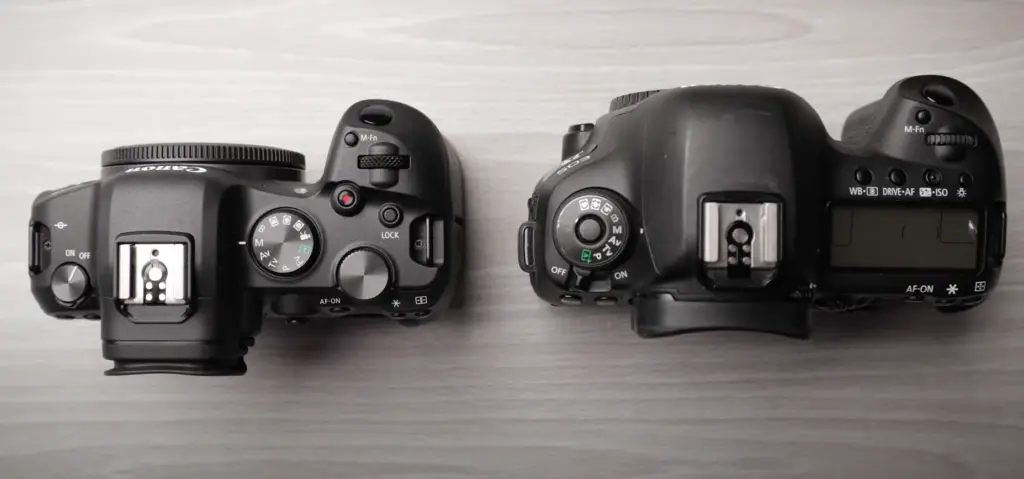
What Is Canon 5D Mark IV?
It’s a full-frame camera with a 30.4 megapixel resolution, 4K video recording capabilities, and dual pixel autofocus. It also has 7 frames per second continuous shooting mode as well as an extensive ISO range of 100 to 32000. The body of the 5D Mark IV is slightly larger than other DSLRs but still compact enough for easy portability, making it an ideal all-rounder for photographers looking for great performance and versatility.
Canon EOS R6 vs. Canon 5D Mark IV: Features
Sensor
The Canon EOS R6 has a 20.1-megapixel full-frame CMOS sensor, whereas the 5D Mark IV is equipped with a 30.4-megapixel full-frame CMOS sensor.
Autofocus System
The EOS R6 camera features Dual Pixel CMOS AF II for fast and accurate autofocus, with up to 100% coverage of the frame. It can track subjects at speeds up to 18 fps with mechanical shutter or 20 fps with electronic shutter. The 5D Mark IV has a 61 point autofocus system which is slightly slower and includes fewer focus points than the R6’s offering.
Image Processor
The Canon EOS R6 features an updated DIGIC X image processor which offers faster processing speeds and improved autofocus performance. The 5D Mark IV uses the older DIGIC 6+ processor.
Video
Both cameras have microphone, headphone and dual-pixel autofocus while recording.
ISO range
The EOS R6 has a base ISO of 100 that can be increased to 102400, and then expanded even further to 204800. Meanwhile, the 5D Mark IV’s range starts at 100 but only goes up to 32000; however, it can be extended from 50-102400.
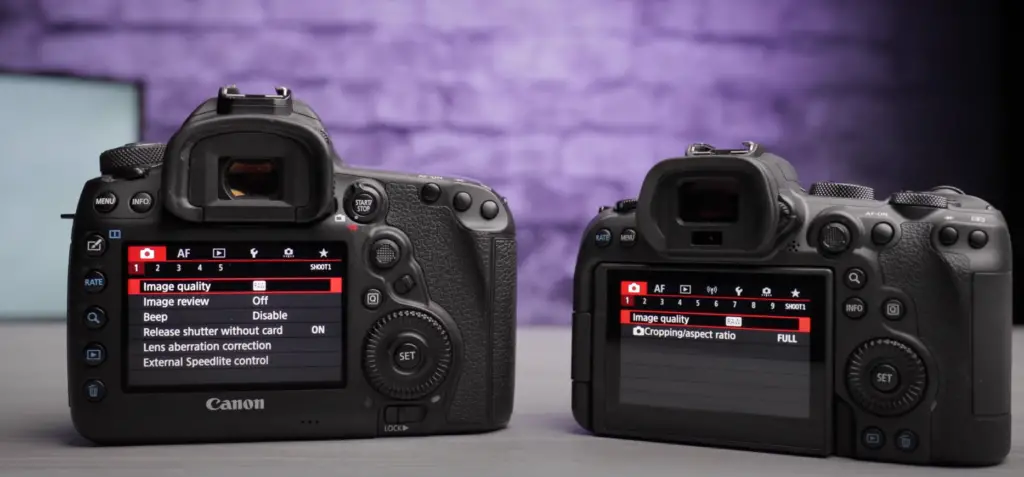
Metering zones
The EOS R6 features 2,270 metering zones compared to the 5D Mark IV’s 63-zone system. [2]
Viewfinder
The EOS R6 features an impressive 3.69 million-dot OLED viewfinder with a 0.76x magnification, while the 5D Mark IV has a slightly lower resolution of 1.04 million dots and a 0.71x magnification.
Memory card slot
The EOS R6 is equipped with two UHS-II/CFexpress card slots, while the 5D Mark IV has one CF and SD slot.
LCD Screen
The EOS R6 has a higher-resolution touchscreen LCD that is fully articulating, while the 5D Mark IV screen is fixed and has fewer dots.
Weather Sealing
Both cameras have weather sealing to protect them from dust and moisture, however the EOS R6 is rated as being slightly more resistant to water and dust than the 5D Mark IV.
Max burst
The Canon EOS R6 can shoot at speeds up to 12 fps with mechanical shutter or 20 fps with electronic shutter, while the 5D Mark IV has a max burst of 7fps.
Connectivity
The EOS R6 and 5D Mark IV both offer built-in Wi-Fi, Bluetooth and NFC for wireless connectivity.
Size & Weight
The EOS R6 is slightly smaller and lighter than the 5D Mark IV, measuring at 138 x 97.5 x 88 mm and weighing in at 680g (body only), compared to the 5D Mark IV which measures 152 x 116 x 76mm and weighs 890g (body only). [3]
Canon EOS R6 vs. Canon 5D Mark IV: Build And Handling
When comparing the Canon EOS R6 and 5D Mark IV body designs, there are some major differences that set them apart. The Canon EOS R6 is a mirrorless camera with a magnesium alloy body and weather sealing to protect against dust and moisture when shooting outdoors. It also features dual memory card slots, which allows you to store your photos or videos on either an SD card or CFexpress for increased capacity.
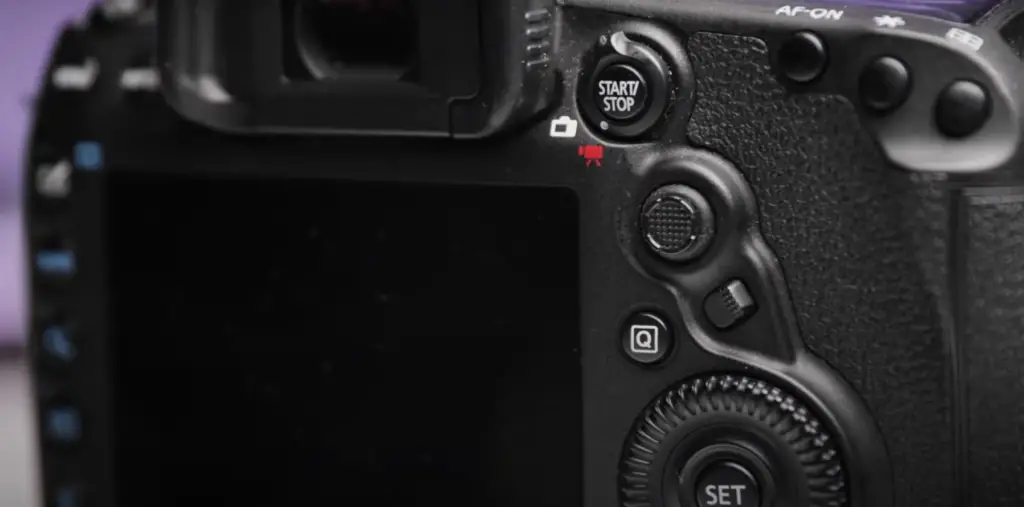
Additionally, it has an optical viewfinder allowing you to compose your shots without any lag or blackout effects like mirrorless cameras may experience.
Canon EOS R6 vs. Canon 5D Mark IV: Lab Results
In terms of lab results, both cameras deliver excellent image quality. The Canon EOS R6 offers 20.1-megapixel resolution, with a maximum ISO sensitivity of up to 102,400. It is capable of capturing 4K video up to 30 frames per second and 1080p video up to 120 frames per second. Additionally, the camera features 5-axis in-body image stabilization which helps reduce camera shake when shooting handheld or on an unstable surface.
Like the R6, it also has 5-axis in-body image stabilization for improved camera shake correction.
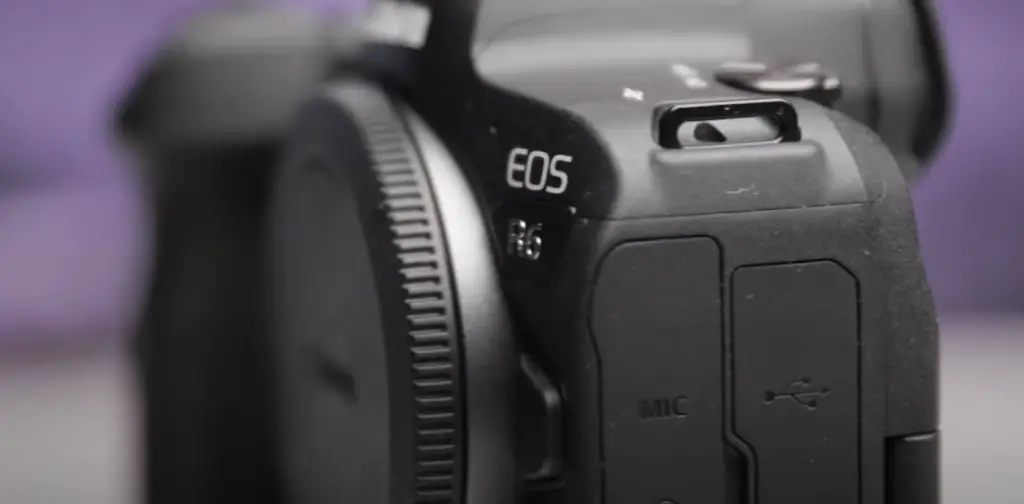
Canon EOS R6 vs. Canon 5D Mark IV: Portability
The Canon EOS R6 is the more compact and lightweight of the two cameras, making it easier to carry. It measures 5.35 x 3.87 x 3.32 inches and weighs 1.45 pounds with its battery and memory cards installed. This makes it a great choice for travel or outdoor photography when size and weight matter most.
On the other hand, the Canon 5D Mark IV is larger and heavier, measuring 6.02 x 4.60 x 2.99 inches and weighing 2 pounds with its battery and memory cards included in the mix. Although slightly bulkier, this also means that it’s more durable than the R6 if you’re planning to use it in rough conditions or take it on a long journey.
Canon EOS R6 vs. Canon 5D Mark IV: Ergonomics & Comfort
The Canon EOS R6 has a more modern design with ergonomic contours designed for comfortable and stable handling. Its touch screen LCD is also tiltable which makes it easier to compose your shots when taking selfies or shooting at hard-to-reach angles.
The Canon 5D Mark IV offers an old school design, complete with physical dials and buttons that allow you to quickly adjust settings without having to take your eye off the viewfinder. It also includes a larger grip which gives you more stability and control over the camera’s movements while shooting handheld. [4]
Canon EOS R6 vs. Canon 5D Mark IV: Ease of Use
The Canon EOS R6 is designed to be an intuitive camera, with its fast and responsive autofocus system and touchscreen display. It also offers several automated shooting modes such as Time-lapse, HDR and Multiple Exposure settings that allow you to capture creative shots without needing to manually adjust settings.
The Canon 5D Mark IV has a more traditional approach when it comes to controls and settings, but the menu system is easy enough for anyone to understand. It also includes a ‘Quick Control’ setting that allows you to quickly access commonly used functions such as white balance, ISO or exposure compensation without having to scroll through menus.
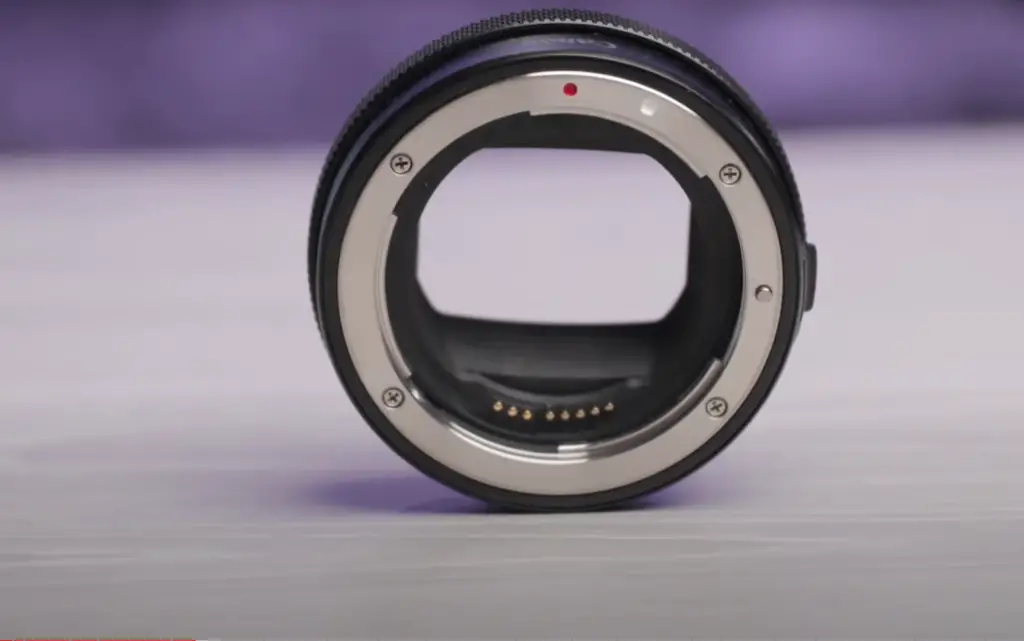
Canon EOS R6 vs. Canon 5D Mark IV: Pros And Cons
The Canon EOS R6 is a great choice for travel and outdoor photographers who want a light and compact camera with excellent image quality. Its touchscreen LCD, fast autofocus system and automated shooting modes give it an advantage over the 5D Mark IV when it comes to ease of use. However, its lack of weather sealing may be an issue if you’re planning to shoot in harsh conditions.
The Canon 5D Mark IV has larger physical controls and a more rugged construction which makes it better suited for heavy duty use. The optical viewfinder also means that there’s no lag or blackout effects while composing your shots like what you get on mirrorless cameras. On the downside, the menu system can be slightly confusing at first and it’s also bulkier than the R6.
Ultimately, when choosing between the Canon EOS R6 and 5D Mark IV, it all comes down to what kind of photography you’re doing and how important portability is for you. If you want a more lightweight camera with excellent features and automated shooting modes, then go for the R6. But if you need a rugged camera that can handle demanding conditions or prefer the traditional design of DSLRs, then the 5D Mark IV would be the better option. [5]
Alternatives to Canon EOS R6 and Canon 5D Mark IV
For those looking for alternatives to the Canon EOS R6 and 5D Mark IV cameras, there are a few options worth considering.
Sony’s Alpha a7R III is a great choice if you want high resolution and video features while Fujifilm’s X-T3 offers excellent image quality at an affordable price point.
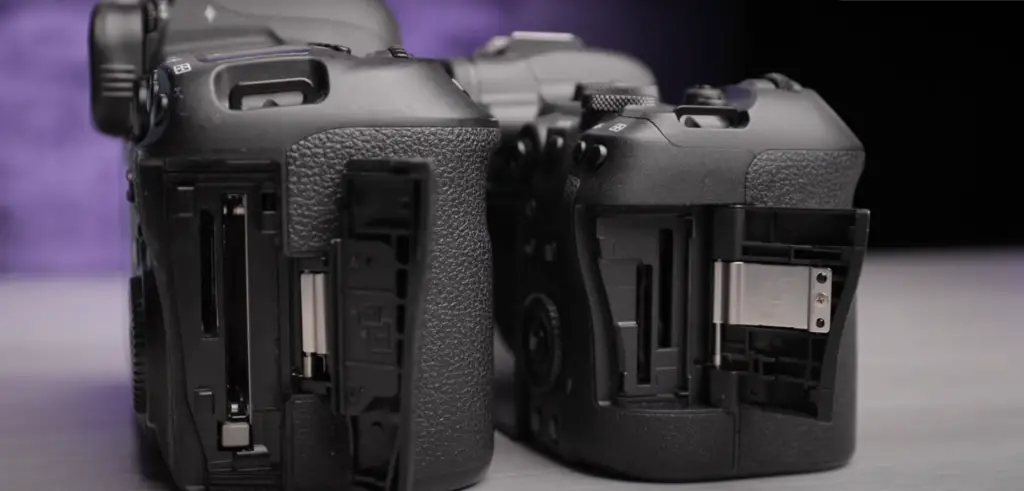
Nikon also offers up an option in the form of the Z6, offering similar specs as the EOS R6 but with better ergonomics.
For those on a tighter budget, Olympus’ OM-D E-M1 Mark III is a good entry-level option that performs well.
Ultimately there are plenty of options available depending on your needs and budget.
Canon EOS R6 vs. Canon 5D Mark IV: How to Maintain?
When it comes to maintaining your Canon EOS R6 or 5D Mark IV, there are some key differences. First, the Canon EOS R6 needs more frequent cleaning due to its higher megapixel count and the inclusion of a dust-reduction system. To keep it performing at its best, you’ll need to clean the camera’s sensor regularly. The dust-reduction system also requires regular firmware updates in order for it to work properly.
The Canon 5D Mark IV is easier to maintain because it doesn’t have as many parts that need regular attention. Still, you should perform regular maintenance such as checking for dirt on lenses and wiping any dust off of the body of the camera itself. To keep your 5D Mark IV sensor in top condition, you should also keep it shielded from dust and moisture during transport.
Finally, when it comes to battery life, the Canon EOS R6 has a slightly better rating than the 5D Mark IV. The EOS R6 can shoot up to 1,240 shots on one full charge while the 5D Mark IV can only manage 980 shots per charge. To maximize your battery life with either camera model, be sure to turn off any unnecessary features such as Wi-Fi and GPS when not in use.
With all of this information taken into account, it’s clear that both cameras offer excellent performance for their respective price points. Ultimately though, whether you choose the Canon EOS R6 or the 5D Mark IV comes down to personal preference and how you plan on using your camera. The EOS R6 is a better option if you require higher resolution images, dust-reduction, and improved battery life. The 5D Mark IV is a great choice for those who value ease of use and don’t need all the fancy features of the EOS R6.
No matter which camera model you choose, make sure to take proper care of it by performing regular maintenance and keeping it shielded from dirt and moisture. With proper upkeep, either camera can provide years of reliable service for capturing moments that last a lifetime!
Common Things to Consider When Using a Canon Camera
When it comes to buying a camera, there are many features and specs that you have to take into consideration. Here are some of the key things to keep in mind when you’re looking at the Canon EOS R6 vs. 5D Mark IV:
- Sensor Size: The sensor size is one of the most important factors to consider for any camera as it affects image quality and low-light performance. The larger the sensor, the more light it can capture which leads to better overall image quality.
- Autofocus Points: Autofocus points refer to the number of AF points available on the camera. The more AF points a camera has, the easier and better it is for focusing on a subject accurately.
- Image Stabilization: Another important feature when looking at the Canon EOS R6 vs 5D Mark IV is image stabilization. This helps reduce shake when shooting handheld and can help you get sharper images even in low-light conditions.
- Battery Life: Battery life is an important factor to consider as this affects how long you can use your camera before needing to charge it. A longer battery life will mean that you’ll be able to take more shots without having to worry about running out of power mid-shoot. [6]
How to Clean Your Camera?
While the Canon EOS R6 and 5D Mark IV offer great features, it’s also important to keep your camera clean in order to protect it from damage.
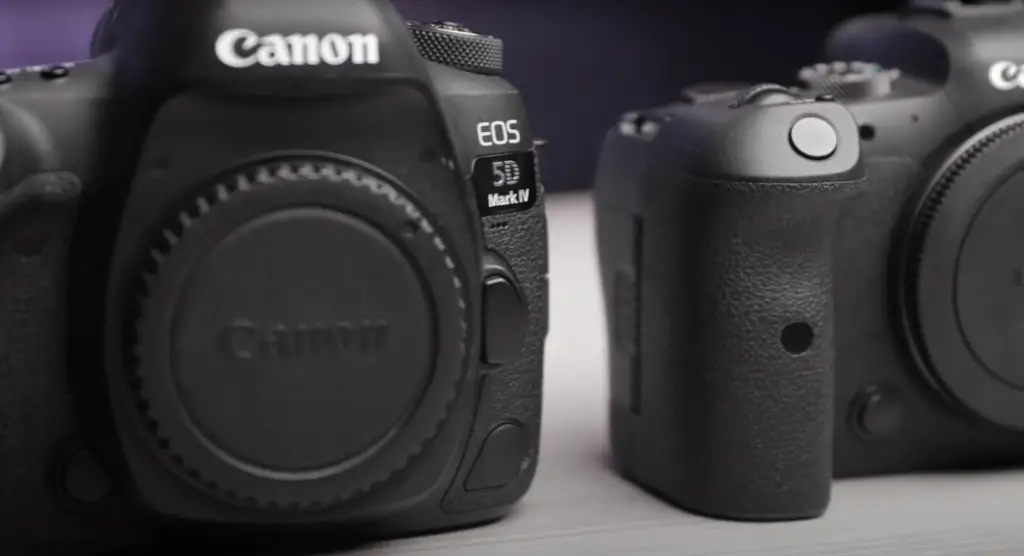
Here are some tips on how to properly clean your camera:
- Begin by preparing a work area that is free of dust particles or other contaminants. Use a microfiber cloth or a soft brush to gently remove any dust from the outside of your camera body.
- To clean the lens(es), use a microfiber cloth and circular motions to wipe away dirt and grime. Avoid putting too much pressure on the lenses as this could scratch them.
- Use special cleaning solutions or a combination of alcohol and water to clean the sensor. Follow the instructions on the solution carefully and do not touch the sensor with your bare hands.
- Use a blower brush to remove dust particles from crevices, ports and buttons. Avoid using compressed air as this can push dust further into the camera body.
When cleaning your camera, take care to avoid getting any liquids inside it. If possible, have a professional service your camera if it requires more thorough cleaning than what you can do at home. With regular maintenance and careful handling, you’ll ensure that your Canon EOS R6 or 5D Mark IV will last for years to come!
FAQ
What camera is better than the Canon 5D Mark IV?
When it comes to comparing the Canon EOS R6 and 5D Mark IV, there are a few key differences to consider. The EOS R6 offers improved autofocus performance, 20 megapixels of resolution rather than 30 from the 5D Mark IV, 4K video recording at up to 60 frames per second (as opposed to 30 fps with the 5D), faster continuous shooting speeds, and a fully articulated touchscreen display for easy composition in tight spaces. Both cameras feature full-frame imaging sensors and Dual Pixel CMOS AF technology for fast, accurate autofocusing during both stills and video recording. If you’re looking for an affordable full-frame camera with excellent autofocus performance and video capability, the Canon EOS R6 is a great choice.
Is R6 a professional camera?
It has 20 megapixels of resolution, 4K video recording at up to 60 fps, improved autofocus performance for both stills and video captured using Dual Pixel CMOS AF technology, faster continuous shooting speeds than the 5D Mark IV, and a fully articulated touchscreen display for easy composition in tight spaces. The camera is also compatible with Canon’s full line of EF lenses, giving you access to an extensive library of high-quality optics.
Is the Canon 5D Mark IV a professional camera?
The Canon 5D Mark IV is a professional-level camera designed to meet the needs of both professional and advanced amateur photographers. It offers 30 megapixels of resolution, 4K video recording at up to 30 fps, Dual Pixel CMOS AF technology for fast, accurate autofocus performance in both stills and video mode, and compatibility with Canon’s full line of EF lenses. The camera also features an optical viewfinder with 100% coverage that displays a bright and clear image.
Is Canon 5D Mark IV good for night photography?
It is a good option for night photography due to its high ISO performance and fast autofocus system. The 5D Mark IV has an ISO range of 100-32000, which can help you capture clear images in low light. Additionally, the camera’s AF system is extremely accurate and fast, allowing you to accurately focus on your subject quickly—even in low light conditions.
Is the Canon R6 discontinued?
No, the Canon R6 is still currently available as of 2021. The Canon EOS R6 was released in 2020 as a mid-level full frame mirrorless camera with many of the same features as its higher-end counterpart—the 5D Mark IV. This includes 20 megapixels resolution, 4K video recording, dual card slots and more. With these features and its lower price point, the Canon R6 can be an excellent option for photographers looking to upgrade their cameras without breaking the bank.
How long does a Canon R6 last?
Like most digital cameras, the Canon R6 is built to last for many years with proper care and maintenance. With regular use, you can expect your camera to last about five to seven years before needing repairs or replacements. To extend the life of your camera, make sure you regularly clean it, avoid exposing it to extreme temperatures, and store it correctly when not in use.
Does the Canon 5D Mark IV overheat?
No, the Canon 5D Mark IV is designed to prevent overheating. However, it is important to note that long video recording sessions and shooting in direct sunlight can cause the camera to become warm. To avoid this, use a tripod when shooting videos or take frequent breaks when shooting in direct sunlight. Additionally, you should consider investing in an external fan or cooling system if you plan on doing long video shoots.
Useful Video: Canon 5D Mark 4 vs. Canon R6: Which one is BETTER?
Conclusion
When deciding between the Canon EOS R6 and the 5D Mark IV, it’s important to consider what kind of photography you plan on doing. If you are looking for a camera that offers great image quality in all shooting situations, then the 5D Mark IV is probably your best option. However, if you have more specific needs such as wildlife or action photography, then the EOS R6 may be a better fit due to its higher frame rate and improved autofocus system. Ultimately, both cameras offer excellent specifications and features that will help any photographer get stunning results. It really comes down to individual preferences and budget when making your final decision.
References
- https://bestoflens.com/canon-r6-vs-canon-5d-mark-iv-comparison/
- https://versus.com/en/canon-eos-5d-mark-iv-vs-canon-eos-r6
- https://capturearena.com/comparison/canon-5d-mark-iv-vs-canon-r6/
- https://www.diyphotography.net/battle-of-the-2499-canons-canon-5d-mark-4-vs-canon-r6/
- https://petapixel.com/2021/03/22/canon-5d-mark-iv-versus-eos-r6-which-is-better/
- https://www.imaging-resource.com/cameras/canon/5d-mark-iv/vs/canon/r6/






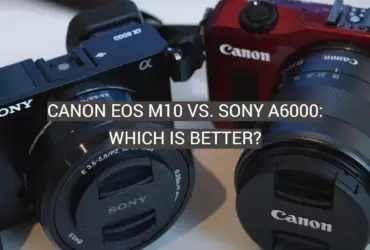

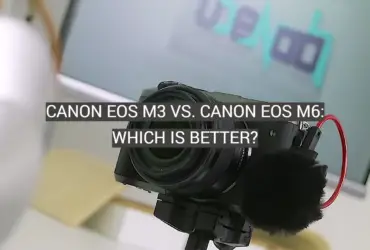
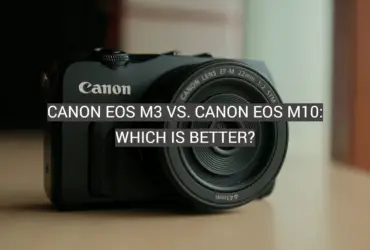

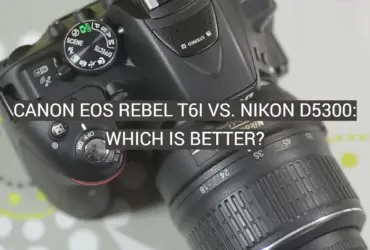
Leave a Reply